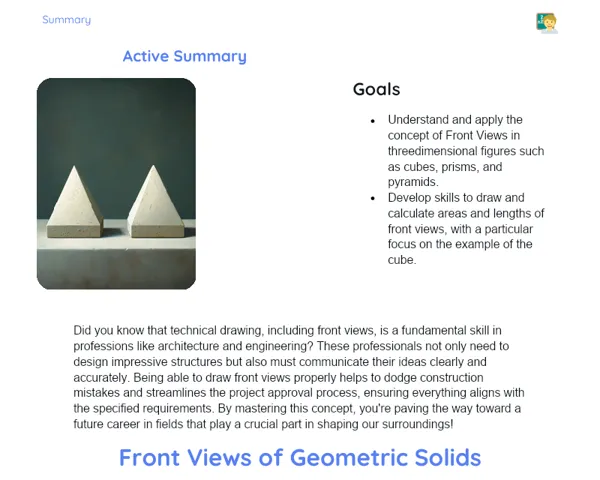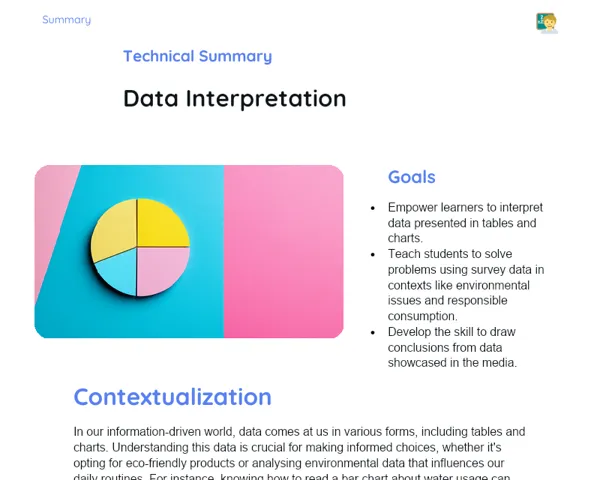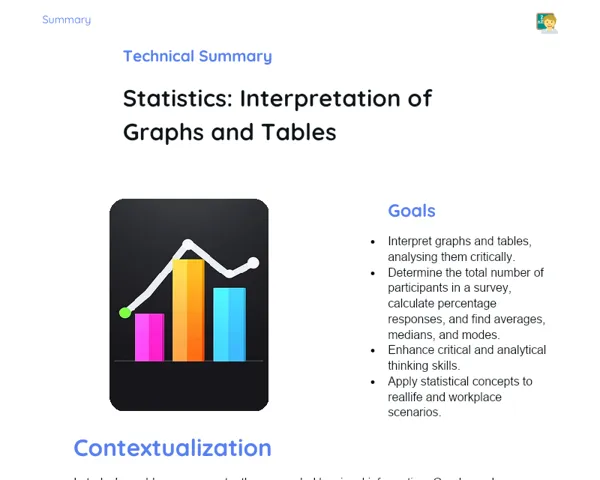Objectives
1. 🔍 Understand and apply the fundamental rule that the sum of the angles inside a triangle is always 180°.
2. 📏 Develop skills to find the third angle of a triangle, given the other two angles.
3. 👥 Encourage teamwork and group discussions to tackle maths problems.
4. 🧠 Use logical reasoning and sound argumentation to justify and solve geometric challenges.
Contextualization
Did you know that grasping the sum of the angles in a triangle isn’t just vital for maths problems, but also crucial in many careers and everyday life? For instance, engineers leverage this knowledge to design safe and efficient structures, while architects use these principles to create visually appealing and functional buildings. Understanding this geometric concept is not merely academic; it's a useful skill that spans various fields of work and study.
Important Topics
Property of the Sum of Interior Angles of a Triangle
This fundamental property states that no matter the size or shape of the triangle, the total of its internal angles is always 180°. For example, if one angle of the triangle is 60° and another is 40°, the third angle must be 80° to complete the 180°. This idea serves as the basis for many proofs and theorems in geometry and is essential for solving triangle-related problems.
-
The sum of the internal angles in a triangle is a universal truth that applies to all triangle types: equilateral, isosceles, and scalene.
-
This property can help verify if a set of angles can form a valid triangle by summing any three angles to check they total 180°.
-
Understanding and applying this property can simplify solving geometric problems and assist in practical applications, such as in engineering and architecture.
Calculating the Third Angle
When two angles of a triangle are known, you can easily find the third angle by subtracting the sum of the two known angles from 180°. For instance, if two angles measure 40° and 60°, you calculate the third angle as 180° - (40° + 60°) = 80°. This method is essential for completing information needed for various geometry problems.
-
This calculation is useful in situations where directly measuring one angle isn’t feasible, but knowing the other two angles allows you to determine all the measures of the triangle.
-
It reinforces the idea that the total of the internal angles of a triangle will always be 180°, an essential property for understanding more complex shapes.
-
It helps nurture logical reasoning skills and the practical application of mathematical principles.
Practical Applications of the Sum of Interior Angles
Understanding this property extends beyond the classroom; it is foundational in various professional fields such as engineering, architecture, and design. For example, engineers use these properties to assess the stability of triangular structures, while architects take angle sums into account to design spaces that are both functional and visually appealing.
-
Civil engineers use this property to create bridges and other structures, ensuring they are stable and do not deform excessively or collapse.
-
In graphic design, knowledge of these properties assists in creating visually pleasing layouts that adhere to principles of composition.
-
This property is also a key tool for solving positioning challenges in geography and navigation, contributing to the accuracy of GPS systems, for example.
Key Terms
-
Internal Angles: The angles formed by two sides of a triangle meeting at an internal vertex.
-
Property of the Sum of Interior Angles: The rule that the sum of the three internal angles of any triangle is always equal to 180°.
-
Equilateral Triangle: A triangle where all sides and angles are equal, with each internal angle measuring 60°.
For Reflection
-
How do you think the property of the sum of the internal angles of a triangle can benefit your daily life or future career?
-
Explain why it's important for an architect or engineer to deeply understand the properties of triangles.
-
Think of a real-life situation where knowledge of the sum of the internal angles could impact an important decision. Describe the scenario and how this knowledge would be applied.
Important Conclusions
-
We remember that the sum of the internal angles of a triangle is always 180°, a fundamental concept with practical applications in mathematics and beyond.
-
We’ve developed skills to calculate the third angle of a triangle when two angles are known, sharpening our logical reasoning and problem-solving abilities.
-
We explored how this knowledge is key in fields such as engineering, architecture, and design, highlighting the critical role of mathematics in the real world.
To Exercise Knowledge
- Draw three different triangles and calculate the sum of their internal angles to confirm that it always equals 180°. 2. Construct a small house model using strips of paper and check if the internal angles of the roof triangles add up to 180°. 3. Use a drawing program or graph paper to make a complex polygon and calculate the sum of the internal angles of each triangle that makes it up.
Challenge
🚀 Architect's Challenge: Use the property of the sum of the internal angles to design a miniature house. Sketch your project, including doors and windows, ensuring all angles are precisely calculated for a stable and visually appealing structure.
Study Tips
-
Practice sketching various triangle types and confirming that the sum of their internal angles is indeed 180°. This will help you visualize and understand the property better.
-
Chat with friends or family about how this property is used in their jobs or hobbies to see real-world applications of what you're learning.
-
Explore online resources such as videos and simulators to visually understand the sum of the internal angles and deepen your grasp of the concept.



